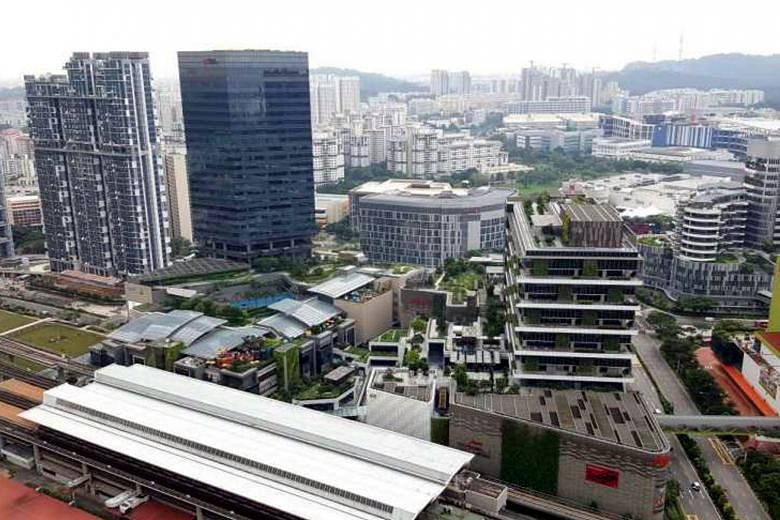How Singapore can rise to the challenge of scarce resources and staying connected.
How do you make the most of being a small island with scarce physical resources?
It's a question that has become part of Singapore's identity over the past 51 years, and it is taking on a new urgency as space gets even more limited.
But technological developments are opening up new possibilities, both in terms of making the most of physical constraints and in connecting with the world.
Two of the five sub-committees that make up the Committee on the Future Economy (CFE) focus on city planning and connectivity.
They study how Singapore can stay well-connected to the global economy while remaining a liveable home for Singaporeans.
From what Minister for National Development and Future City co-chair Lawrence Wong has said about the discussions, they are working around a few key challenges that will be here to stay - namely, land scarcity, an ageing population and climate change.
The committee is taking advantage of advances in technology to overcome them.
INFRASTRUCTURE
Singapore has two decades to increase its land supply by 5,600ha.
The Government's Land Use Plan, released in 2013, showed that Singapore will require 76,600ha of land by 2030, up from the supply of 71,000ha in 2010.
This is needed to accommodate a larger population - projected to grow to 6.9 million by that year.
One way to increase the land supply is to build underground.
Talking to reporters in June, Mr Wong said that much more could be done beyond the Jurong Rock Caverns, a liquid hydrocarbon storage facility 150m below ground .
He said: "For instance, the utility or power substations that you see around - a lot of them can go underground. It will cost more, but also free up surface land for development."
But the authorities do not envision Singapore's ports and airports going underground.
Land supply for them is set to go up from 3 per cent in 2010 to 6 per cent by 2030, as Singapore strives to stay a connected global city.
The CFE's website also hinted that it would not be wise for housing to be underground, as it might lead to wealthier people living in sky-rise apartments while the have-nots live underground.
Other ideas being considered by the committee include developing economic clusters outside the city, Mr Wong has said previously.
The Government is gunning for "mixed-use centres where residents live, learn, work and play", already being developed in Jurong West, Jurong Lake District, Woodlands, Sembawang and Punggol.
Some may also be pilot towns for self-driving cars - another development likely to come up in the CFE report.
Mr Wong envisioned the real possibility of housing estates with "mover" systems that take residents from their homes to the nearest MRT station in the next 15 to 20 years.
While this is happening, Singapore will also have to grapple with the effects of climate change.
In a piece in The Straits Times last November, the chief executive of Singapore's national water agency, Mr Ng Joo Hee, said: "It doesn't just rain a lot in Singapore. We expect that, increasingly, it will come all at once."
To cope with more intense rainfall, Singapore will have to come up with more innovative drainage systems, in addition to its massive underground storm water tanks.
Other green ideas on the CFE's website include generating energy from food waste and installing cutting-edge solar panels in more places - even on clothes.
CONNECTIVITY
Singapore has forged much of its success by being an air and sea hub, but it needs to do more to retain its advantage in these sectors.
It also needs to be connected to the digital economy and financial markets around the world, to drive future growth.
Minister in the Prime Minister's Office Chan Chun Sing, co-chair of the Future of Connectivity sub-committee, set the tone for its work in a Facebook post last February.
He said: "Connectivity has always been vital for Singapore's survival. Our aviation, maritime, finance, and trade hubs flourish because of our strong linkages to the rest of the world.
"Staying connected and strengthening these links will be even more important for Singapore to not just survive, but thrive over the next few decades."
Members on the committee, including airline heads and those in the airport, port and logistics sectors, discussed how Singapore could continue to remain as aviation and maritime hubs, he said.
They also tackled how Singapore can be more plugged into the digital economy, which includes cyber security, advanced analytics and e-commerce.
The Government is keen on developing more workers with the skills to take on jobs in these sectors, and has come up with national programmes to train such talent.
The growth of these sectors can spell more business opportunities at home and abroad.
For instance, there was "broad agreement" that Singapore should take advantage of the sharing economy and adapt regulations to facilitate their growth, said Mr Chan.
So far, the authorities have been working on finding the right balance between regulation and innovation. The future is likely to see more of that tightrope-walking.


